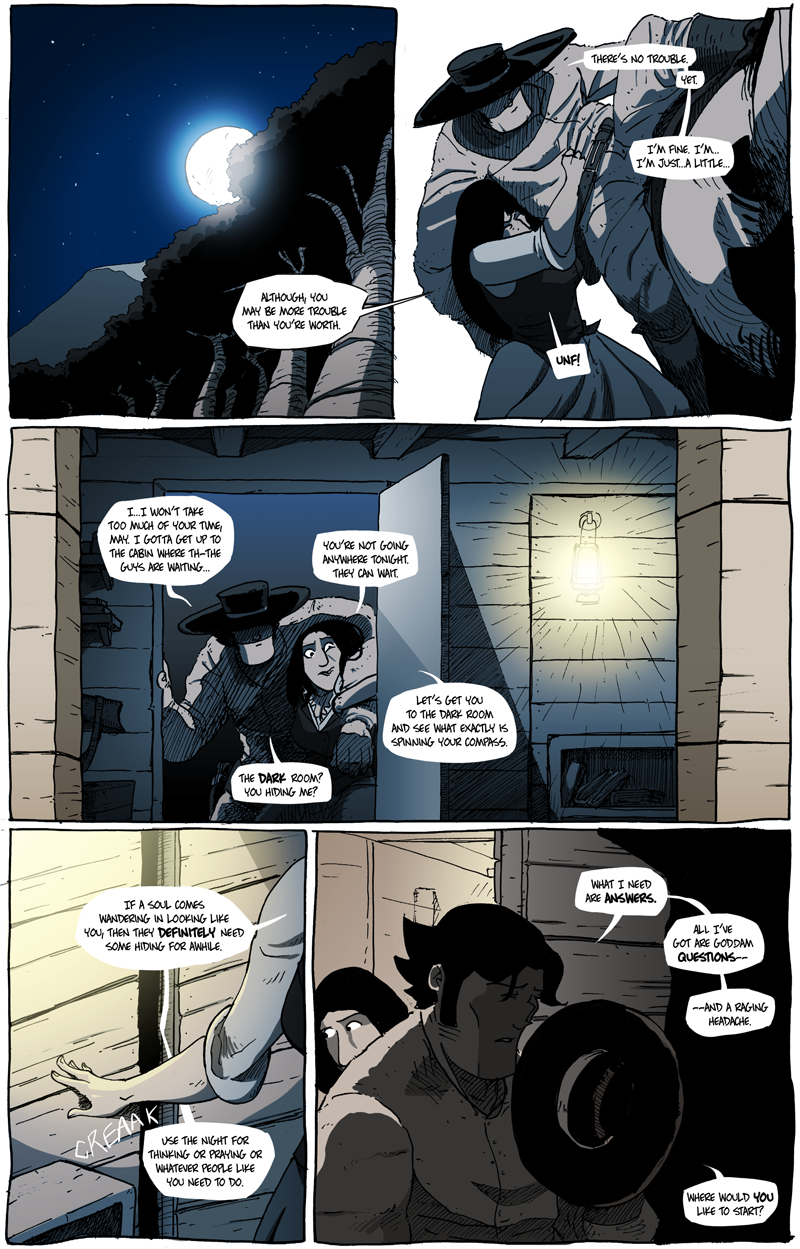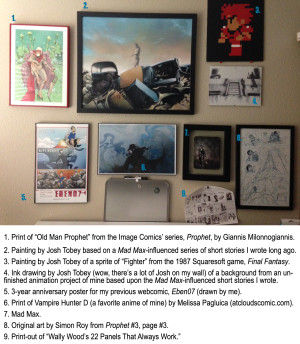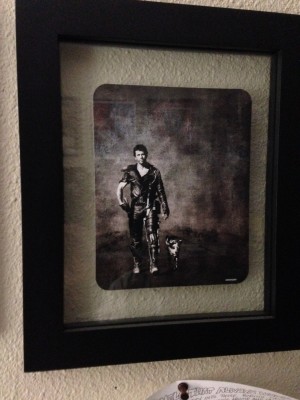The Spinning Needle
I’ve been wanting to write about the new Mad Max movie since its release. There is a lot going on in that movie that deserves discussion, but I’m still too excited about it to write anything substantive (even after three viewings). I’ve been a staunch Mad Max fan for many years; a framed picture of Mel Gibson as the titular character hangs on my wall above my drawing table among other inspirational art.
One of the things that I think struck a chord in me as an impressionable youth when I first viewed these movies (mostly The Road Warrior [Mad Max 2 for our non-USA readers] and Mad Max Beyond Thunderdome, to be honest) is that writer/director George Miller very much uses a “show don’t tell” approach to this property. History is never explicit in Mad Max––hell, in Mad Max, The Road Warrior, and Mad Max: Fury Road there is barely any important dialogue––not how the world ended up like it is, not how these strange outposts comprised of scrap metal and rusted-out car chassis came to be, not how these roving androgynous, sadomasochistic gangs were organized or sustain themselves. These are just thrown on the screen and the story unfolds in and around them. The history and explanation is suggested. What’s needed is for the viewer to look closely at the backgrounds and the costumes, to see the pieces that make it up and think about why they’re there rather than just accepting it all as some twisted gestalt.
In the commentary for The Road Warrior, a story was relayed that every aspect of the outlandish outfits, for every character, needs to have a reason for being there. What that tells me is that even though the Mad Max movies seem like post-apocalyptic fantasy––and to an extent they are––they are also a considered composition, thoroughly thought-through by George Miller every step of the way. The sets are the history, context, and explanation as are the costumes, the cars, the haircuts, the tattoos, etc. Since those are on-screen, he doesn’t feel the need to explain them through dialogue or voice-overs.
As you make something, the danger of getting too close to it looms. After awhile, the creator can only see the seams on this Frankensteinean patchwork and all the times pieces were reworked, scrapped, or replaced. When drawing a comic, for example, it’s easy to worry about a pose of a character or to fret over whether the perspective of a panel is accurate. With the dialogue, it’s easy to get distracted by the worry about how soon the reader needs to know how these characters know each other, for how long, and what they think of each other. The nice thing about comics is that can be done in a single panel; it just requires an assumption that if the reader wants to know, all that needs to be done is to take another look at the panels on the page rather than simply relying on dialogue and captions.
If anything, Mad Max: Fury Road hit me so hard because it really forced me to think as I watched cars slam into each other, to lean in and try to hear the mostly inconsequential dialogue mumbled beneath the sound of roaring engines and whipping winds. I studied faces and clothing and realized that they were telling a story that extended far beyond the beginning and the end of the movie and filled its world with an inspiring vigor.
––––––––––––––––––––
So, Long John is back! But will it disappear again? No.
I’m creating chapter 2 in a much different environment than the one in which I created chapter 1. Chapter 1 was pretty much completely drawn, colored, and lettered before it went to the web and was created over the course of about seven or eight months. Chapter 2 started being drawn during my winter break from teaching and I tried to draw while classes were going strong (I teach at CSU, Sacramento and The Art Institute of California – Sacramento) and I quickly realized that Long John and grading papers are at odds. I was working hard on both tasks, but one had to give.
Luckily, in that time I was able to put together the book, Long John: Volume 1 (for sale for a mere $7, plus shipping––buy it now!), and plot out through chapter 3; so, work was done on the comic even if it didn’t immediately result in new pages on the website.
The good news is that I’m on summer break from school and I have a lot more time to write and draw. However, I don’t want to collapse again under the anxiety, though I realize staunch deadlines are good for me.
With that, I announce that chapter 2, “Bird’s Eye,” will release at least one page every Tuesday until the chapter is over. It is a much slower timeline, but it is one that I know I can manage.
Thank you for your patience.





Discussion ¬